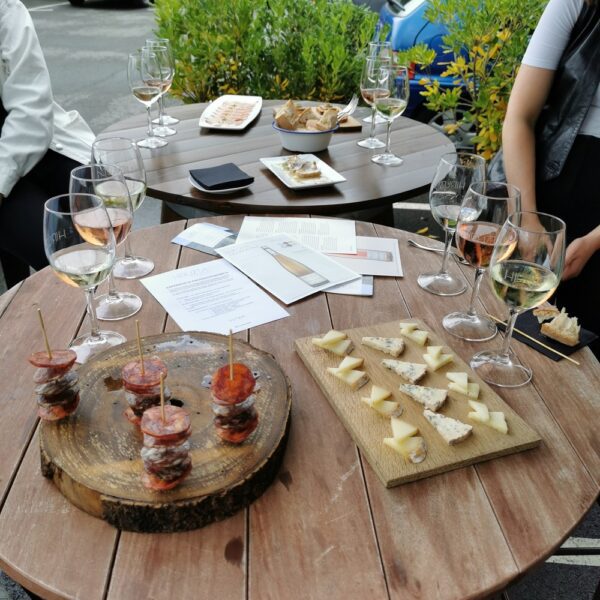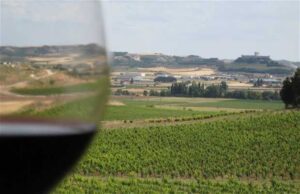

Unbridled Taste and Adventure
Discover the taste of Madrid that is more than just a vibrant city. Here, the wines reflect the heritage of the place. Imagine yourself savoring


Director of Wine Tours Madrid.
Wset 3 and Senior Viticulture Technician.


Wine tasting is the sensory action through which we can evaluate the quality, style and condition of a wine. It is about approaching the wine from our visual, olfactory and gustatory senses to analyze its characteristics and qualities and to create a common code that allows us to objectify the opinions about the product in order to build a consensus about its state of consumption and its market value.
We know that the market value of a wine is determined by more than one factor and not all of them have to do with the quality of the product itself. The prestige of the winery, the region, the grape variety, the vintage, market forces around supply and demand as well as external agents such as wine rating companies can cause the prices of two wines of similar quality to have completely different prices.
Moreover, we know that wine is not only drunk with the mouth, but also with the head and the heart. What do we mean by this? Well, when facing a new wine, wine tasters will take into account the context of the wine, that is to say, the vineyard where the grapes come from, the place of production, the winery, its philosophy, the way it is made, the region, the country, the variety, the vintage, etc. In the end, if wine is something so magical, it is precisely because of its evocative character and its ability to go beyond the limits of the liquid and generate emotional and mental landscapes beyond the glass that contains it.
On the other hand, the function of tasting is established as the only sensory technique that allows us to objectify something as subjective as taste, facilitating the task of understanding why a wine is the way it is and what state of life it is in.
The tasting consists of three phases: visual, olfactory and gustatory. In each of them we will reach different conclusions that will allow us to understand the wine we have in front of us.
In this phase we will be able to obtain all the information related to the aromas that make up the wine as well as their nature. We divide these aromas into primary, secondary and tertiary. In the primary aromas we appreciate those aromatic notes coming from the grape variety such as fruit, flowers or some herbaceous or spicy notes as well as the aromas related to the fermentation processes such as lactic, bakery or alcoholic notes. In the secondary aromas we appreciate all the aromatic palette gained during the aging processes, whether in barrels, vats, bottles or tanks. Here we can group roasted notes, spicy notes, animal notes, etc. Finally we have the tertiary aromas which are those that appear after the evolution of the wine over the years and which are expressed in the form of notes of tobacco, leather, mushroom, kerosene, honey or cooked fruit.
In this phase we will be able to appreciate the characteristics of the wine related to taste such as texture, body, acidity, sweetness, bitterness, etc. We will also be able to appreciate the length of the wine and its expressiveness. When we are in this phase we usually analyze how the wine goes through its different stages: the attack, the passage through the mouth and the aftertaste. The attack can be defined as the sensation generated at the front of the mouth at the first contact with the wine and can range from an enveloping and silky attack to a rough or aggressive attack. The mouthfeel can be characterized as structured or light, dry or sweet, aggressive or enveloping, elegant or flat, etc. And finally, the aftertaste will be the memory and the duration of that memory generated by the wine, long or short, bitter or sweet, pleasant or unpleasant, if it leaves us salivating or not, if it dries our mucous membranes or moisturizes them, etc.
There are several tasting schools and an infinite number of different techniques, as well as tasting systems and codes. Wine Tour Madrid uses the WSET systematic tasting system because it is the institution that certifies us as experts in wine quality analysis and evaluation. WSET allows us to share a code and an international tasting system, shared by thousands of amateurs and professionals throughout the world.
Its certifications are divided into four levels, two of them of professional rank and requirements and the other two of initiation. For more information about the institution you can find a link in our website footer or you can write us to the website to ask for more information.
Wine tasting is undoubtedly a fundamental tool when it comes to taking a step further as amateur drinkers and learning to judge a wine not only by what it makes us feel but also by what it is in itself beyond our tastes, opinions and prejudices.
We hope that this article has helped you and has generated more curiosity to continue investigating the mysterious world of wine sensory analysis.


Discover the taste of Madrid that is more than just a vibrant city. Here, the wines reflect the heritage of the place. Imagine yourself savoring


The Wine Pleasure Promise is Wine Tour Madrid's commitment to each client. The wine tours in the region offer


The Adventure Among Vineyards awaits you behind every hill. Surprise yourself in every discovery with the wine tours near Madrid.
©2022 ALL RIGHTS RESERVED
WhatsApp us